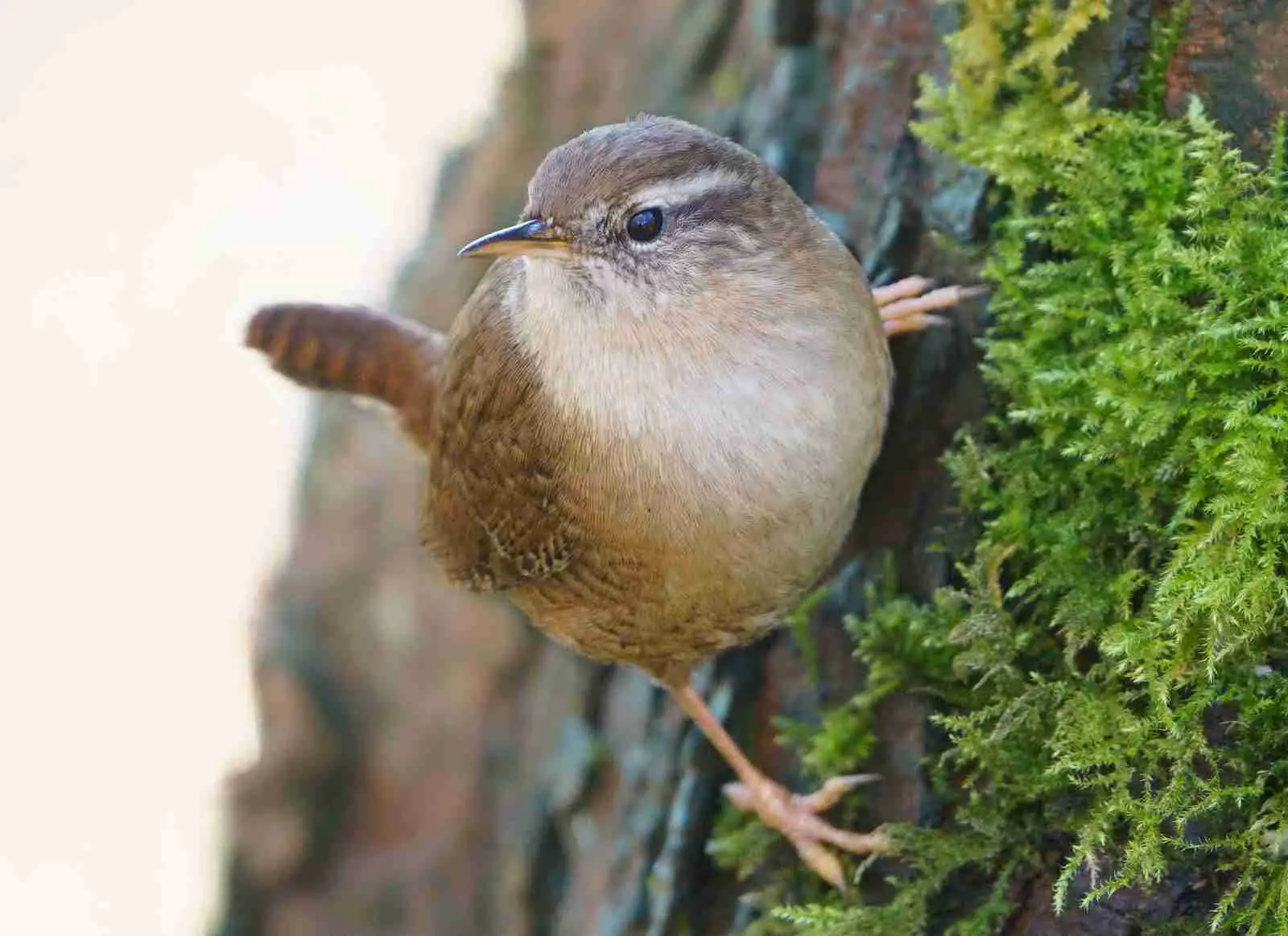To provide you with an accurate birding guide, we’ve consulted a trusted Ornithologist and gathered pictures and essential information from reliable sources. Below, you will find the most commonly seen birds in Mexico!
American Kestrel

American Kestrels are small, attractive birds of prey native to North America and Mexico. They range in size from 6-12 inches long and weigh only 3-6 ounces. American Kestrels have pointed wings and a long tail that helps them maneuver quickly through the air. They have striking plumage with barred reddish-brown backs and white underparts.
American Kestrels primarily feed on small mammals, reptiles, amphibians, and insects. They are adaptable hunters that can be found in a variety of habitats including grasslands, deserts, woodlands, mountain slopes, and suburban areas. Kestrels hunt by perching on a high lookout or hovering in the air while they search for prey.
American Kestrels are cavity nesters and typically use tree cavities or man-made nest boxes that have been provided by humans. They can lay 3-7 eggs in a single clutch and incubate them for 29-31 days. Both parents help feed the young until they reach fledging age at approximately 3-4 weeks.

Bewick’s Wren

Bewick’s Wren is a small, sparrow-sized bird that is found in many areas of Mexico. It has gray and white plumage with a long, curved bill and a long tail with rounded tips. Bewick’s Wrens are active foragers and rarely stay in one place for very long. They feed mainly on insects, spiders, and other small invertebrates.
Bewick’s Wrens usually build a cup-shaped nest of grasses and twigs lined with fine fibers. The female typically lays 3-4 eggs which are incubated for about 13 days before hatching. Both parents help to feed the young until they fledge at around 21 days.
Bewick’s Wrens are relatively abundant in Mexico and can be seen in open fields, gardens, woodlands, and other urban areas. They are also very vocal birds that often give a loud, repeated “tee-churrr” call that can be heard from a distance.

Broad-billed Hummingbird
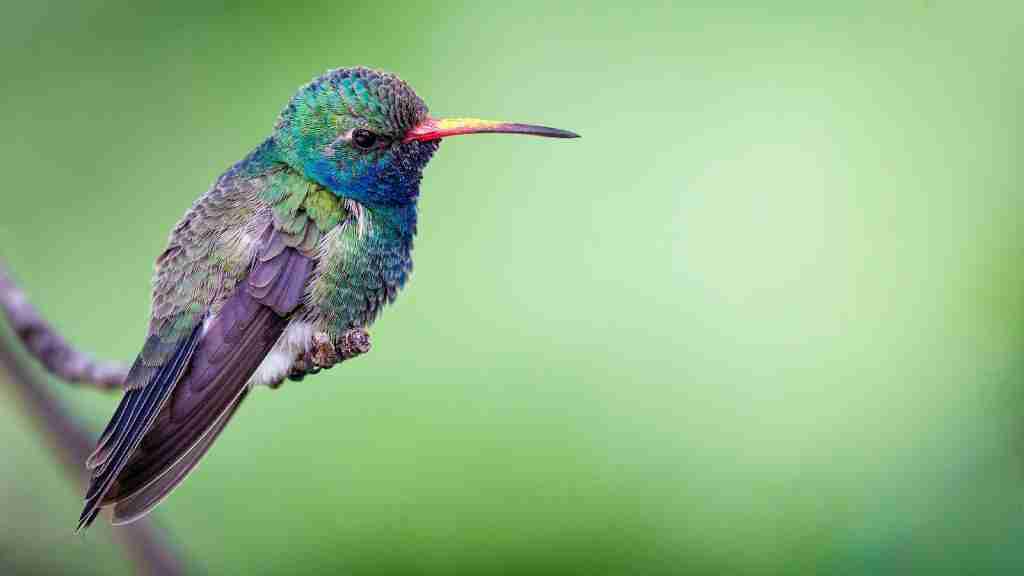
The Broad-billed Hummingbird is a small, mainly green bird native to Mexico and other parts of Central America. It has a broad, rounded bill that helps it feed on the nectar of flowers. The males have striking plumage with iridescent blue feathers on the head, back, and wings.
Broad-billed Hummingbirds are found in a variety of habitats including deserts, woodlands, and scrublands. They feed mainly on nectar from flowers but will also take small insects and spiders for additional protein.
Broad-billed Hummingbirds typically build cup-shaped nests made of plant down, mosses, and lichens that are attached to a tree branch or other structure. They can lay up to two eggs in one clutch and incubate them for 16-18 days before hatching. Both parents help feed the young until they fledge at around 20-25 days old.

Canyon Towhee
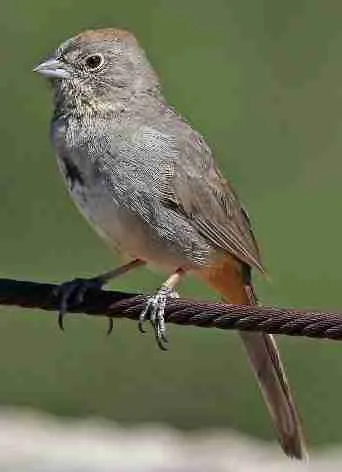
The Canyon Towhee is a chunky, sparrow-like bird found in scrubby habitats across Mexico and the southwestern United States. This species has dark brown upperparts with white streaking on the sides and a pale rufous belly. The bill is black and long and the tail is slightly rounded at its tip.
Canyon Towhees feed mainly on the ground where they take fruits, seeds, and insects. They are also known to eat spiders, snails, and other small invertebrates.
Canyon Towhees build cup-shaped nests of grass, leaves, and bark that are concealed in shrubs or low trees. The female usually lays 3-4 eggs that are incubated for 12-13 days before hatching. Both parents help feed the young until they fledge at around 11-12 days old.
In its natural habitat, the Canyon Towhee is an elusive species that can be hard to spot unless it calls out with a loud “chur-URR” song. They generally live in pairs or small family groups and are rarely seen alone.

Golden-fronted Woodpecker
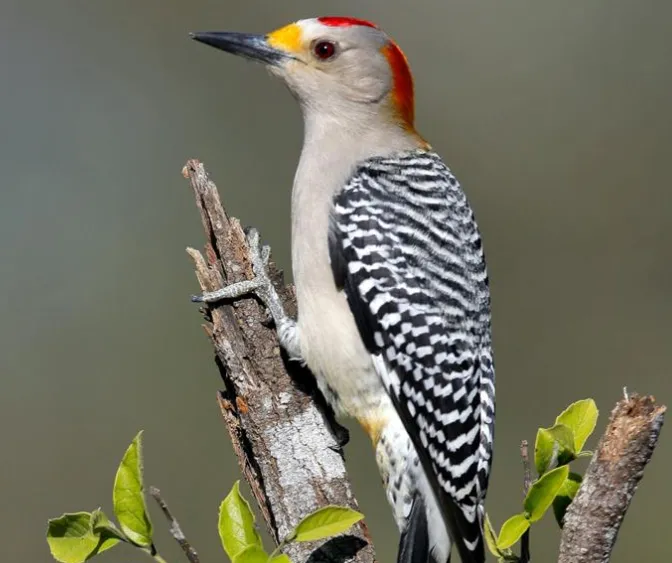
The Golden-fronted Woodpecker is a striking, medium-sized woodpecker that can be found in Mexico and some parts of the southwestern United States. It has a bright yellow forehead, nape, and throat with red wings and a tail. The back is barred black and white while the underparts are buffy.
This species feeds mainly on insects, larvae, and fruits that it finds by pecking at the wood. Golden-fronted Woodpeckers are often seen foraging through woods and open areas in search of food.
Golden-fronted Woodpeckers typically build their nests in tree cavities or man-made nest boxes. The female usually lays 4-5 eggs that are incubated for about 12 days before hatching. Both parents help feed the young until they fledge at around 28-29 days old.
The Golden-fronted Woodpecker is a noisy and conspicuous bird that can often be heard drumming on trees or calling with its distinctive “chuck-a-chuk” call. They generally live in small family groups and are often seen foraging together.

Great-tailed Grackle
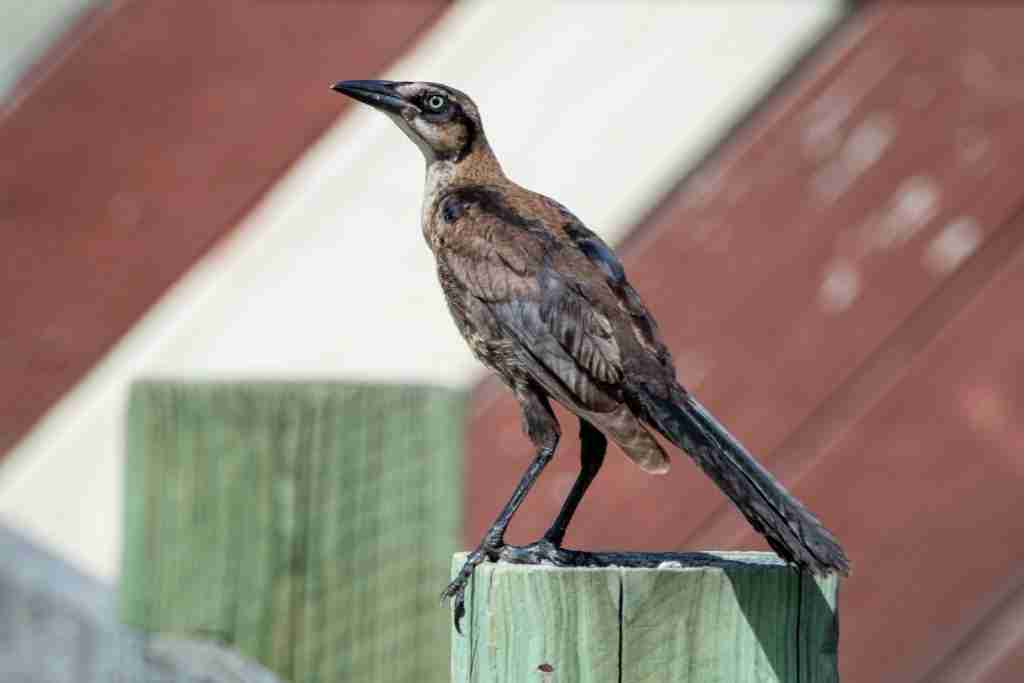
The Great-tailed Grackle is a large, black bird that can be found in Mexico and other parts of Central America. It has an iridescent black body with purple and green sheen on the head and wings. The tail is long and powerful with a pronounced keel at the end.
Great-tailed Grackles feed mainly on insects, fruits and seeds. They are also known to eat small vertebrates such as frogs, fish and lizards.
Great-tailed Grackles build cup-shaped nests of twigs, grasses and leaves that are concealed in trees or other structures. The female usually lays 3-4 eggs that are incubated for about 11-12 days before hatching. Both parents help feed the young until they fledge at around 18-20 days old.
Great-tailed Grackles are a loud and boisterous species that can often be heard singing their raucous “quark” song. They are highly gregarious birds that can be seen in large flocks foraging through open areas. They are also known to take advantage of human food sources, so they can often be found at picnic areas and around garbage dumps.

Inca Dove
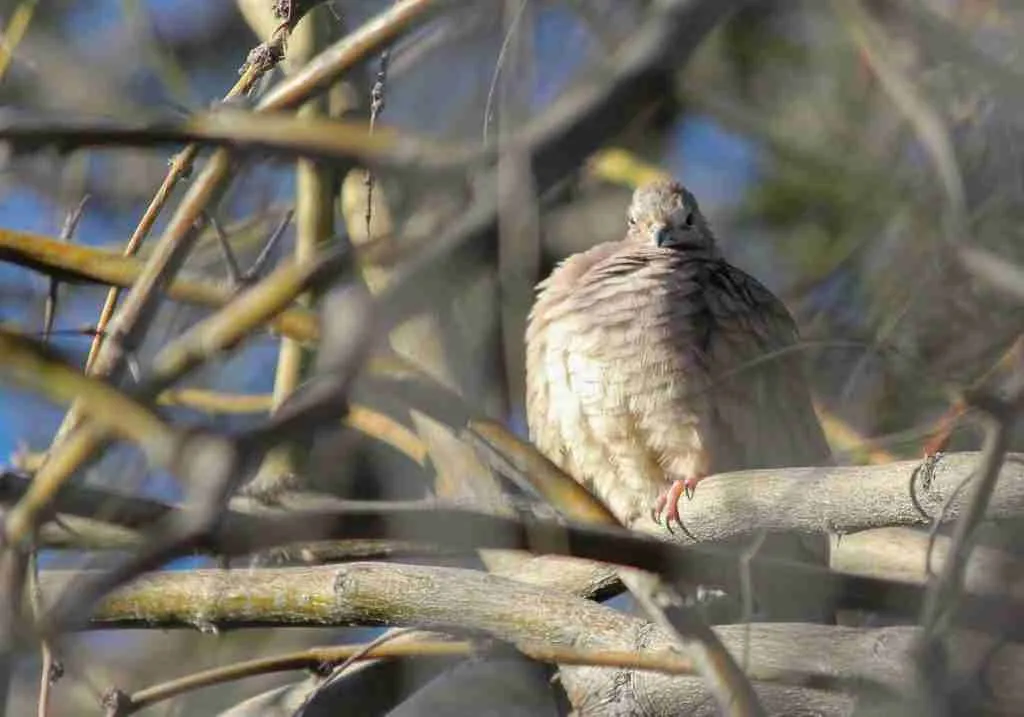
The Inca Dove is a small, stocky dove found in Mexico and the southwestern United States. It has a pale gray body with white patches on the wings and tail. The head is slightly darker than the rest of the body and it has a long, pointed bill.
Inca Doves feed mainly on seeds that they find on the ground. They are also known to take insects and fruits from shrubs and trees.
Inca Doves build open-cup nests in dense vegetation or on rocky ledges. The female usually lays 2 eggs that are incubated for about 14 days before hatching. Both parents help feed the young until they fledge at around 12-14 days old.
Inca Doves are usually silent but can be heard calling with a soft “coo” song when they are courting or alarmed. They generally live in small flocks and can often be seen foraging through open areas or perched on power lines. They are also known to make long migrations in response to food availability.

Trochilidae Hummingbirds
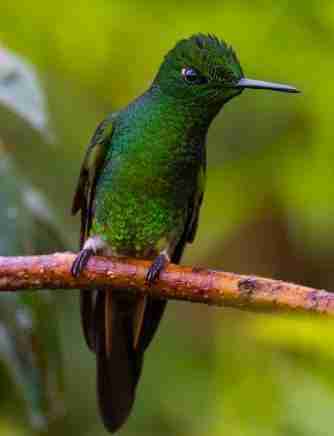
The Trochilidae family of hummingbirds consists of over 300 species found in the Americas. They are small, colorful birds with iridescent plumage and long, thin bills.
Hummingbirds feed mainly on nectar from flowers that they find using their specialized bill. They also take insects to supplement their diet.
Hummingbirds build small, cup-shaped nests of plant material and spider silk that are often concealed in trees. The female usually lays 2 eggs that are incubated for about 14 days before hatching.
Hummingbirds are known as the aerial acrobats of the only bird world due to their ability to hover in mid-air and fly backward. They are very active birds that are often seen foraging through gardens and other open areas in search of food.

Lesser Goldfinch
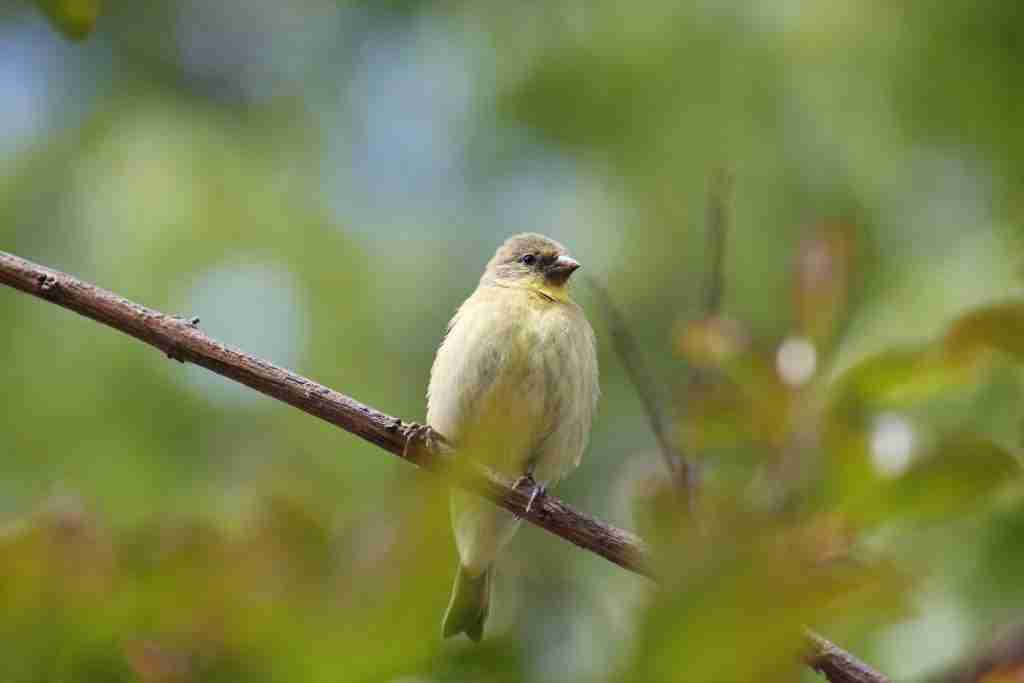
The Lesser Goldfinch is a small, yellow bird that can be found in Mexico and some parts of the southwestern United States. It has an olive-green back and crown with a bright yellow belly and wings. The tail is black tipped with white.
This species primarily feeds on seeds from grasses, trees, and weeds. They are also known to take insects and spiders from the ground or in flight.
Lesser Goldfinches typically build their nests in tall shrubs, trees, or cacti. The female usually lays 3-5 eggs that are incubated for about 11-14 days before hatching. Both parents help feed the young until they fledge at around 18-21 days old.
Lesser Goldfinches are generally quite vocal and can be heard singing a variety of chirping, twittering, and trilling songs. They are usually seen in small flocks foraging through open areas or perched on wires or branches. Lesser Goldfinches are also known to migrate in response to food availability.

Tropical Kingbird
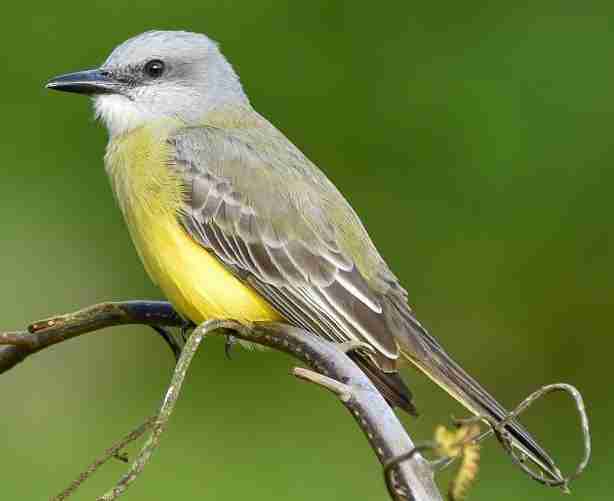
The Tropical Kingbird is a large, gray flycatcher found in Central and South America. It has a chestnut-crowned forehead, white belly, and silver-gray wings. The tail is long and pointed with blackish tips.
Tropical Kingbirds feed mainly on insects that they catch in midair. They are also known to take berries and fruits from trees.
Tropical Kingbirds build twig nests in the forks of trees or bushes. The female usually lays 2-4 eggs that are incubated for about 12-15 days before hatching. Both parents help feed the young until they fledge at around 17-21 days old.
Tropical Kingbirds are quite vocal and can often be heard singing a variety of melodic whistling calls. They generally live in small flocks and can usually be seen perched on wires or branches, scanning the surrounding area for food. They are also known to migrate south in winter months in search of more abundant food sources.

Ruddy Ground Dove
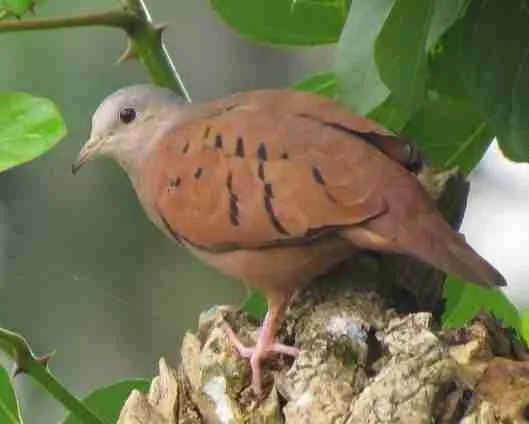
The Ruddy Ground Dove is a small, grayish-brown dove found in Central and South America. It has a distinctive rufous patch on the head, pale yellow belly, and reddish-brown wings. The tail is short and rounded with white edges.
Ruddy Ground Doves feed mainly on seeds that they find on the ground. They are also known to take insects and fruits from trees and shrubs.
Ruddy Ground Doves build simple stick nests in dense vegetation or low bushes. The female usually lays 2 eggs that are incubated for about 14-15 days before hatching. Both parents help feed the young until they fledge at around 12-14 days old.
Ruddy Ground Doves are usually quite quiet but can be heard calling with a soft “coo” song when alarmed or courting. They generally live in pairs and can often be seen foraging through open areas or perched on wires or branches. They are also known to make long migrations in search of more abundant food sources.

Loggerhead Shrike
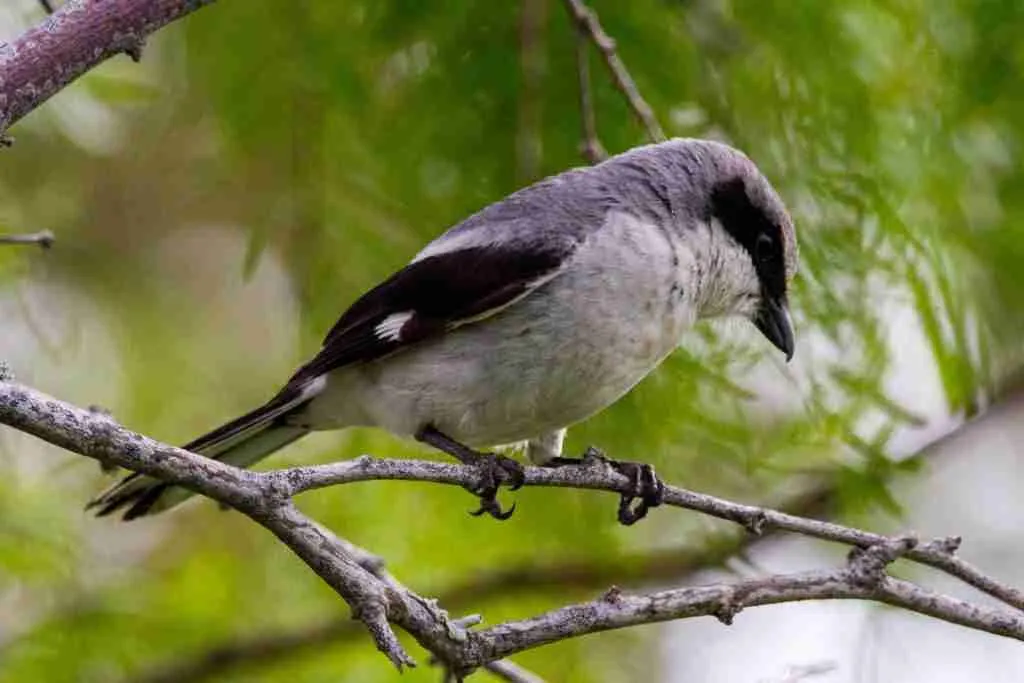
The Loggerhead Shrike is a small, black and white bird found in North America. It has a grey back and head with a black mask across the eyes, white belly and wings, and a black tail.
Loggerhead Shrikes hunt mainly on insects that they catch in midair or on the ground. They are also known to take small lizards, frogs, and rodents.
Loggerhead Shrikes build nests in the forks of trees or bushes. The female usually lays 3-7 eggs that are incubated for about 15-17 days before hatching. Both parents help feed the young until they fledge at around 22-24 days old.
Loggerhead Shrikes are quite vocal and can often be heard singing a variety of chirping, trilling, and whistling calls. They generally live in pairs or small groups foraging through open areas or perched on wires or branches. Loggerhead Shrikes are also known to migrate south in winter months in search of more abundant food sources.

Rufous-backed Robin

The Rufous-backed Robin is a small, grayish-brown songbird found in Central and South America. It has a distinctive rufous patch on the back, a pale yellow belly, and reddish-brown wings. The tail is short and rounded with black edges.
Rufous-backed Robins feed mainly on insects that they catch in midair. They are also known to take berries and fruits from trees and shrubs.
Rufous-backed Robins build twig nests in dense vegetation or low bushes. The female usually lays 2-3 eggs that are incubated for about 14-15 days before hatching. Both parents help feed the young until they fledge at around 13-15 days old.
Rufous-backed Robins are usually quite vocal and can be heard singing a variety of melodic whistling calls. They generally live in pairs or small family groups, often foraging together through open areas or perched on wires or branches. They are also known to migrate south in winter months in search of more abundant food sources.

Vermilion Flycatcher
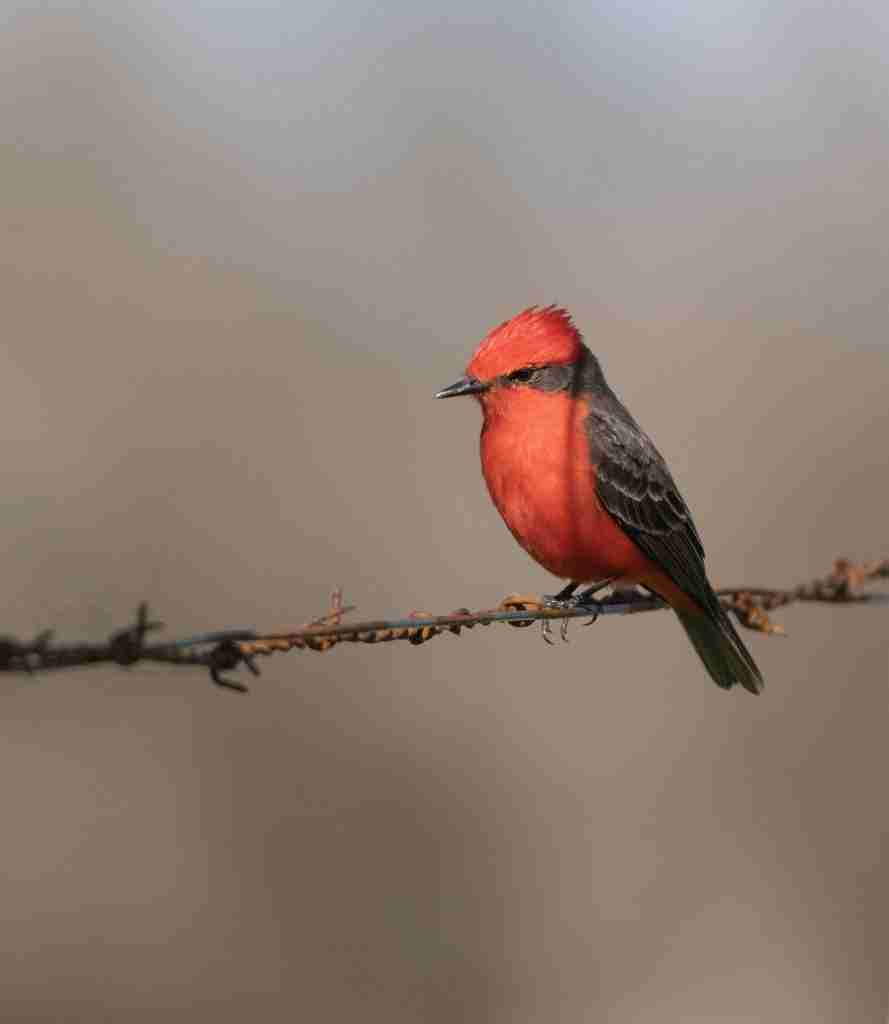
The Vermilion Flycatcher is a small, bright red songbird found in Central and South America. It has a black mask across the eyes, white belly, and orange-red long wings with black edges. The tail is long and pointed.
Vermilion Flycatchers feed mainly on insects that they catch in midair or on the ground. They are also known to take small lizards, frogs, and rodents.
Vermilion Flycatchers build cup-shaped nests in dense vegetation or low bushes. The female usually lays 2-4 eggs that are incubated for about 12-14 days before hatching. Both parents help feed the young until they fledge at around 18-21 days old.
Vermilion Flycatchers are usually quite vocal and can often be heard singing a variety of melodic whistling calls. They tend to live in pairs or in a small group, often foraging together through open areas or perched on wires or branches. Vermilion Flycatchers are also known to migrate south in winter months in search of more abundant food sources.

White-winged dove
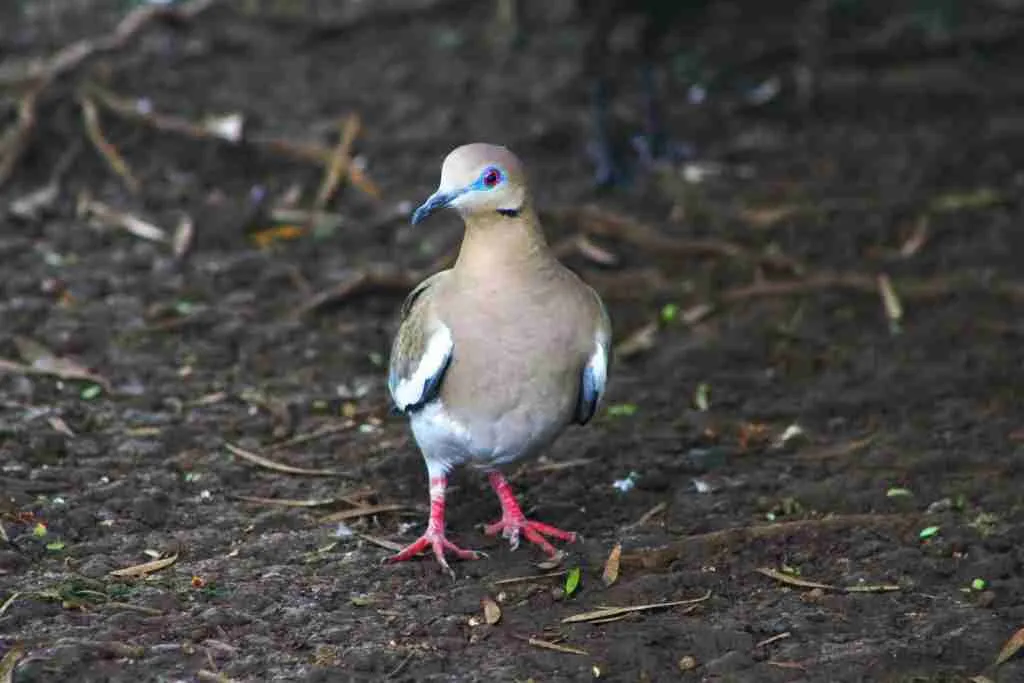
The White-winged Dove is a large, grayish-brown bird found in North America. It has a pale gray body with white wing patches, black tail feathers, and orange eyes.
White-winged Doves feed mainly on grains that they find on the ground or in trees and shrubs. They are also known to eat insects, fruits, and berries.
White-winged Doves build stick nests in dense vegetation or low bushes. The female usually lays 2-3 eggs that are incubated for about 13-14 days before hatching. Both parents help feed the young until they fledge at around 14-15 days old.
White-winged Doves are usually quite vocal and can often be heard singing a variety of melodic cooing calls. They generally live in pairs or small family groups, often foraging together through open areas or perched on wires or branches. White-winged Doves are also known to migrate south in winter months in search of more abundant food sources.

What kind of birds do they have in Mexico?
Mexico is home to a wide variety of birds, including parrots, hummingbirds, cardinals, woodpeckers, flycatchers, warblers, eagles, hawks, falcons and owls. Mexico’s diverse habitats also provide refuge for many migratory species such as ducks, geese and sandpipers. There are more than 1,000 species of birds in Mexico, making it one of the world’s most biodiverse countries for bird watching.
Among these are some particularly popular species such as The Great Horned Owl and the Resplendent Quetzal. Other notable Mexican bird species include the Black-capped Vireo, Long-tailed Sabrewing, Magnificent Frigatebird, and Eared Trogon. Additionally, the Mexican coasts are home to many species of seabirds such as pelicans, cormorants, gulls, and terns.
Does Mexico have tropical birds?
Yes, Mexico has a number of tropical birds. The country is home to a variety of parrots, toucans, macaws, and hummingbirds. Mexico’s humid tropical forests are also home to many brightly colored trogons and motmots.
Additionally, coastal areas from the Pacific Ocean to the Caribbean Sea host numerous species of waterfowl and shorebirds. Notable examples include Frigatebirds, Pelicans, Gulls, and Terns. Mexico’s diversity of habitats also provide refuge for many migratory species such as ducks, geese and sandpipers. With over 1,000 species of birds in Mexico, the country is a bird watching paradise.
What are the black birds in Mexico called?
The black birds of Mexico are known by a number of names, depending on the species. These include Black Vultures, Common Black Hawks, Black Ibis, and White-collared Seedeater. Other notable examples include the Great Kiskadee, Crested Caracara and Lesser Nighthawk.
Lastly, some migratory species such as the Common Blackbird, Red-winged Blackbird, and Rusty Blackbird are also found in Mexico. Regardless of the species, these birds can be admired all around Mexico for their beauty and diversity.
What are the birds in Cancun called?
Cancun and the surrounding Yucatan Peninsula are home to a number of bird species. These include parrots, hummingbirds, cardinals, woodpeckers, flycatchers, warblers, eagles, hawks, falcons and owls. Cancun is also a popular destination for migratory birds such as ducks, geese and sandpipers.
Notable species include the Great Horned Owl, Resplendent Quetzal, Black-capped Vireo, Long-tailed Sabrewing, Magnificent Frigatebird, Eared Trogon, and various species of pelicans, cormorants and gulls. The Yucatan is also home to a number of tropical birds such as parrots, toucans, macaws and hummingbirds. With many bird-watching opportunities, Cancun is an ideal destination for bird enthusiasts.
What are the best places in Mexico for bird watching?
Mexico is one of the top destinations for birdwatching in the world, with over 1,000 species of birds. Some of the best places for bird watching are Xochimilco in Mexico City, Sian Ka’an Biosphere Reserve along the Caribbean coast, and El Cielo Biosphere Reserve near Tamaulipas.
These areas boast a wide variety of tropical and migratory birds such as parrots, macaws, toucans, eagles, hawks, falcons and owls. Across Mexico’s diverse habitats, visitors can also witness the beauty of hummingbirds, flycatchers, warblers and waterfowl. With its rich avian diversity and number of observation sites, Mexico is a bird watcher’s paradise.
Critically endangered (possibly extinct) birds in Mexico
Mexico is home to a number of critically endangered birds that are possibly extinct. These include the Yucatan Wren, Military Macaw, Yellow-headed Parrot, Oaxaca Sparrow and Horned Guan. Other birds such as the Thick-billed Parrot, Spix’s Macaw and California Condor are also critically endangered in Mexico.
In addition, the endemic subspecies of Laysan Duck is also critically endangered in Mexico and may be extinct. Conservation efforts are underway to help protect and preserve these species as well as their habitats. With continued conservation efforts, these rare birds might have a chance of survival in Mexico’s biodiverse landscapes.
Wading birds in Mexico
Mexico is home to a number of wading bird species. These include herons, egrets, ibises, and storks. Notable examples include the Roseate Spoonbill, Reddish Egret, American White Ibis and Wood Stork. Additionally, several species of shorebirds such as sandpipers, plovers and godwits can be found along Mexico’s coasts.
Mexico is also a popular destination for migratory shorebirds such as the Whimbrel, Great Knot and Red-necked Stint. These wading birds rely on Mexico’s wetlands and mangroves for food and shelter during their long journeys across the globe. With its many aquatic habitats, Mexico is a great place to observe these fascinating birds in their natural environment.
What are the most common raptors in Mexico?
Mexico has a wide variety of raptors, or birds of prey. These include owls, hawks, eagles and falcons. Some of the most common raptor species found in Mexico are the Common Black Hawk, Harris’s Hawk, Crested Caracara and Red-tailed Hawk. Other raptors that can be found in Mexico include the Great Horned Owl, Snowy Owl and Ferruginous Pygmy-Owl.
Bird checklists
Bird checklists and maps are available to help identify the various raptors that can be found in Mexico. With its diverse habitats and abundant bird species, Mexico is a great destination for bird watchers of all levels.
Birds species with short legs and long legs
Bird species with short legs can be found across Mexico, such as flamingos, common sandpipers and numerous species of swallows. Long-legged wading birds such as herons, egrets and ibises are also abundant in the country’s wetlands, rivers and coastal areas. Other long-legged birds include eagles, hawks and falcons.
Conclusion
Mexico is home to an incredibly diverse range of birds, from endangered species to abundant migratory birds. With its varied habitats, Mexico is a great destination for bird watching and provides ample opportunity for enthusiasts to observe these fascinating creatures in their natural environment. Whether you’re looking for raptors or wading birds, Mexico has something to offer every bird watcher.

An avid ornithologist, zoologist and biologist with an unwavering passion for birds and wild animals.
Dr. Wilson’s journey in ornithology began in childhood and led him to obtain a Ph.D. in Ornithology from the prestigious Avian Research Institute. He has worked closely with renowned experts in the field and conducted extensive research and field studies globally.

